by | Jul 27, 2016 | 01 What's New, Kids |
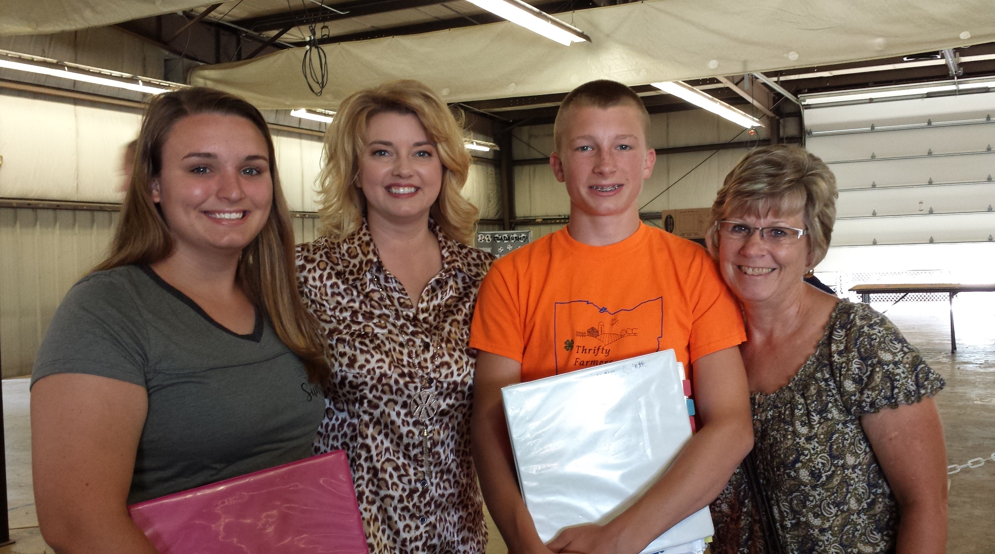
From left to right: Emily Guinther, Amie Tennant, Braden Guinther, and Tove Russell
Wouldn’t you love to get your children or grandchildren more involved in family history work? Learn how to help them participate in the genealogy 4-H project program or earn their Boy Scout genealogy merit badge. You too can help in the work by becoming a genealogy merit badge counselor.
There are dozens of ways to encourage our youth to participate in genealogy. Some even include scholarships, ribbons, trophies, and badges. It’s always nice to be recognized for your hard work! Today, I’m sharing about genealogy 4-H projects and the Boy Scout genealogy merit badge.
The Genealogy 4-H Project Program
4-H is a organization or club made up of a group of five or more youngsters guided by one or more adult volunteer leader. In the U.S., each club helps their youth to complete a 4-H project for the annual county fair. Genealogy is one of hundreds of possible projects. Genealogy projects are broken down into three divisions or years. Each yearly division project builds on the one before so that at the end of three years, the youth will have compiled a very thorough genealogy.
This year, I followed along as Tove Russell of Shelby County, Ohio worked with her four grandchildren to accomplish their genealogy 4-H projects. Two of the teens were able to take their work to the county fair. Emily and Braden Guinther have just completed their second year. To complete the second year genealogy requirements, they did the following:
- Began a personal journal,
- Completed a family group sheet for each aunt and uncle, including an interview if able,
- Visited a courthouse, library, or cemetery for the purpose of researching genealogy,
- Learned to use a microfilm and/or micofiche reader,
- Attended a genealogy workshop or genealogical society meeting,
- Added new information to their pedigree chart,
- Wrote a personal history essay, and
- Copied and shared their family history findings with another family member.
Braden’s favorite part of his genealogy journey was writing the perso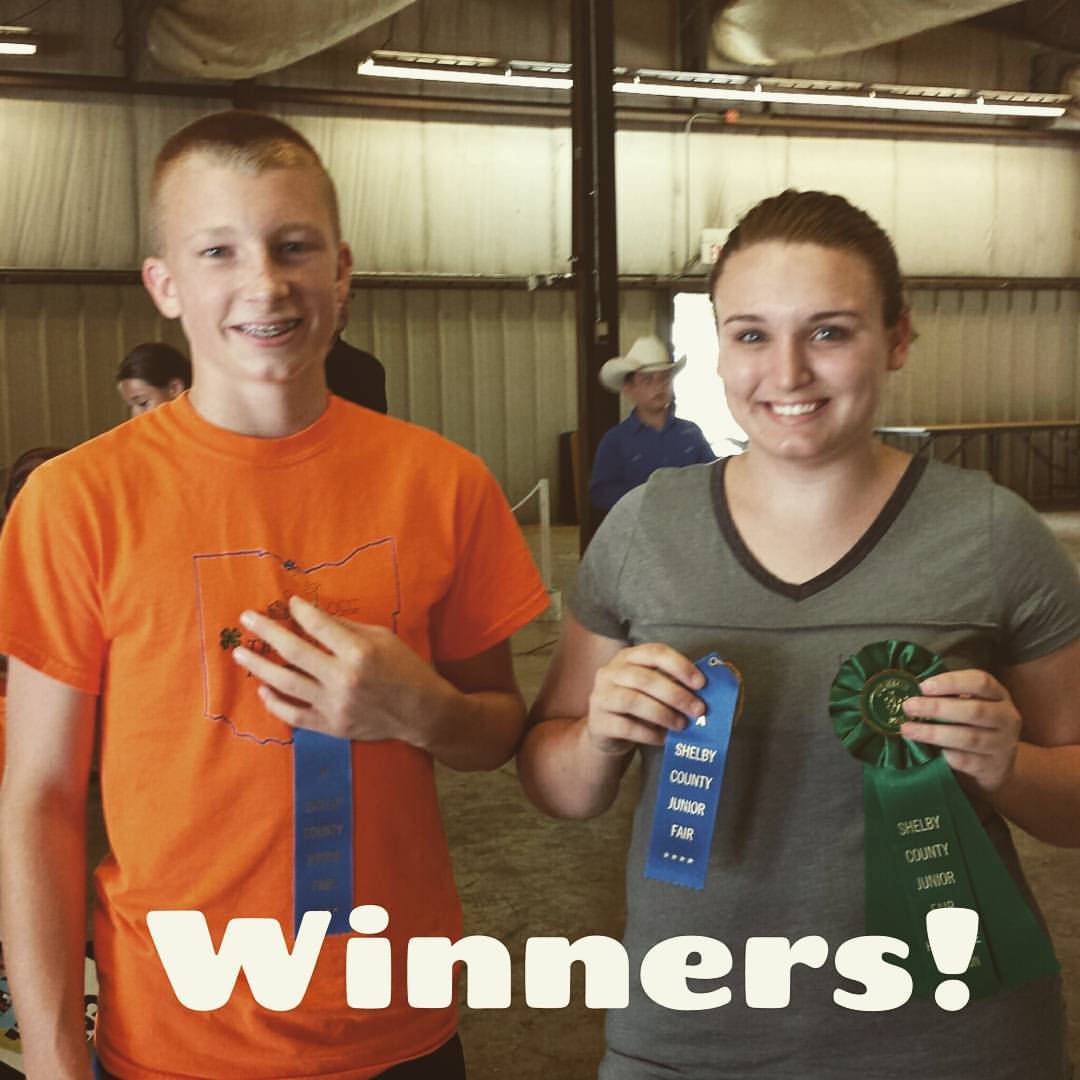 nal essay and learning to use the microfilm reader. Emily’s favorite part was learning her great-grandmother married her brother-in-law when her first husband passed away. Each of the kids had several fun stories to share! I particularly liked learning about their great-grandfather (who I remember as a child) working as a grave digger!
nal essay and learning to use the microfilm reader. Emily’s favorite part was learning her great-grandmother married her brother-in-law when her first husband passed away. Each of the kids had several fun stories to share! I particularly liked learning about their great-grandfather (who I remember as a child) working as a grave digger!
Both Emily and Braden won a ribbon for their genealogy 4-H projects. In addition, Emily won Honorable Mention.
The Genealogy Merit Badge
The Boy Scouts of America also has a genealogy and family history initiative. The organization has been particularly helpful in completing many cemetery projects for BillionGraves. Among their many merit badges, the genealogy merit badge is still rather unique. Requirements for this merit badge are extensive, but some of the requirements include:
- Defining the words genealogy, ancestor, and descendant,
- Keeping a journal for 6 weeks,
- Interviewing a relative,
- Naming three types of genealogical resources and how they can help a genealogist,
- Visiting a genealogical library, society, or archive,
- Completing at least a three generation pedigree chart, and
- Completing a family group sheet.
I was very excited to learn that I could become involved as a local genealogy merit badge counselor. If you would like to do so, you will need to meet the following requirements:
- Be at least 18 years old,
- Be proficient in the merit badge subject by vocation, avocation, or special training,
- Be able to work with Scout-age boys,
- Be registered with the Boy Scouts of America,
- Complete the Youth Protection training, and
- Complete and submit the BSA Merit Badge Counselor Information Form.
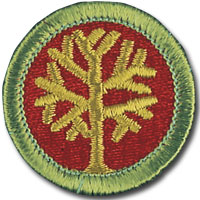
Genealogy Merit Badge
You can turn in your form to any local Boy Scout troop or Scout Master. After your information form and application have been evaluated, you will be notified that you are now a genealogy merit badge counselor. You can work with one specific Boy Scout troop or many.
Historical and genealogical societies may also enjoy hosting an event for their local Boy Scout troop to learn all about genealogy in their area. What a great way to get involved in the community and support the youth!
Did you participate in a genealogy 4-H program or earn a genealogy merit badge as a youth? If so, we would be delighted to hear about it in the comments below. If you have some pictures to share of your genealogy 4-H project or the project of your children or grandchildren, head on over to our Facebook page and share a photo. We love hearing from you, Gems!
More Gems on Genealogy for Youth
Family History for Kids: 3 Ways to Interest Young People in Genealogy
Family History for Kids Starts WITH the Kids
How to Create a Coloring Book for Family History
by | Jul 25, 2016 | 01 What's New, Cemeteries, Volunteer |
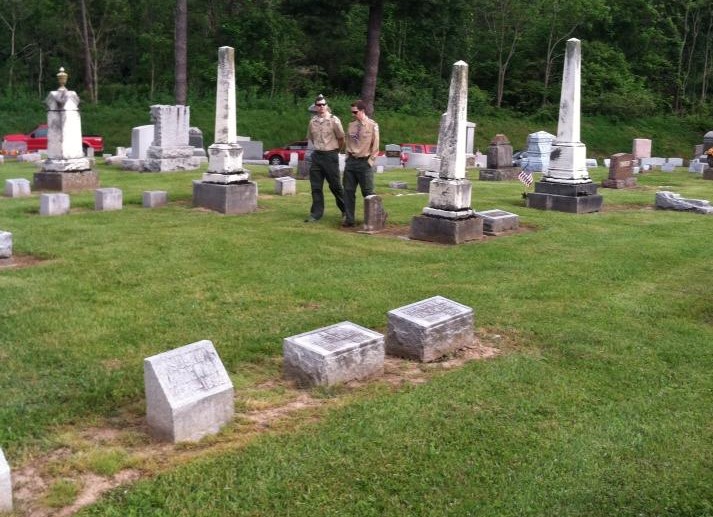
On July 30, 2016, in honor of the veterans of the Armed Forces, BillionGraves and the Boy Scouts of America will host a nationwide service project, Finding the Fallen. Here’s what you need to know to get involved.
Finding the Fallen is the perfect project for youth of all ages, especially your High School Seniors who need to complete service hours for graduation. By joining the project, you and your youth will serve these heroes by photographing and logging the GPS locations of the headstones in our local and national cemeteries and then uploading them to BillionGraves.com.
BillionGraves works with a community approach and they need everyone’s help to make this a successful event! Why not make it a day of friends, family, and service? To organize yourself and your friends, you will need to create a free account at BillionGraves.com and then visit https://billiongraves.com/finding-the-fallen. You can choose to participate as a Boy Scout group, a group of friends, or as an individual.
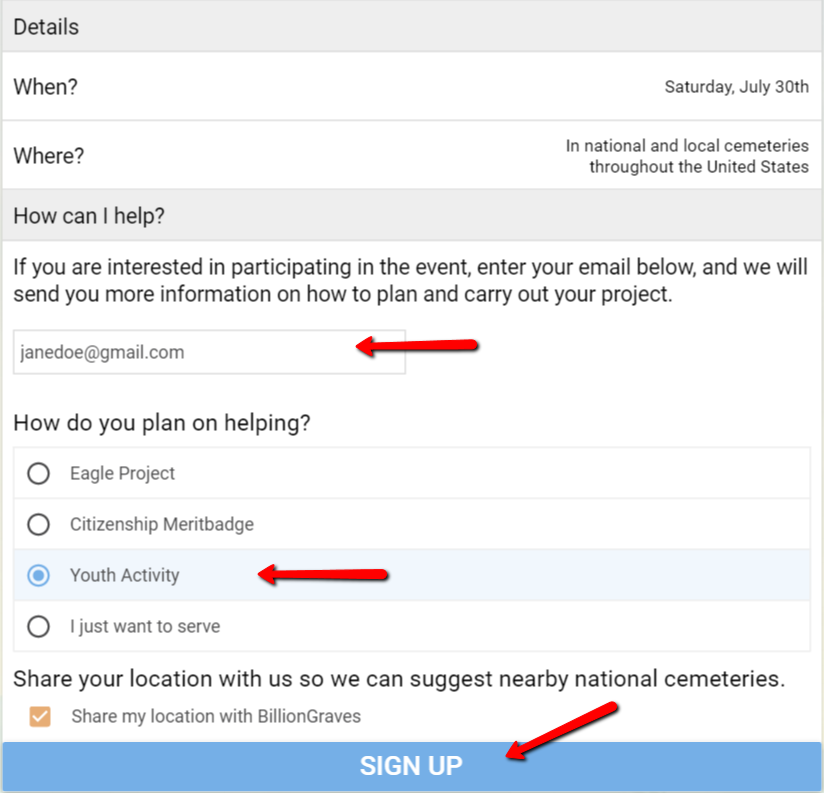
Once you have clicked SIGN UP, you will be sent an email with directions for the next steps. In the meantime, you will want to download the free BillionGraves.com app to your smartphone or mobile device. If you need a little help doing that, click here to follow step-by-step instructions.
THE DAY OF THE EVENT
The BillionGraves app helps volunteers to locate cemeteries in their area. When viewing the BillionGraves app home page, select the Cemeteries icon and then the Show Nearest option. This will provide a list of local and national cemeteries in the area. Though the national cemeteries are particularly encouraged for this event, there are always members of the military buried in our local cemeteries, too. If you do not have a national cemetery nearby, you are welcome to visit your local cemetery. Remember, many military graves are marked with bronze plaques next to the headstone, or some buy bulk medication online diazepam 10mg local cemeteries have a special plot for military burials.
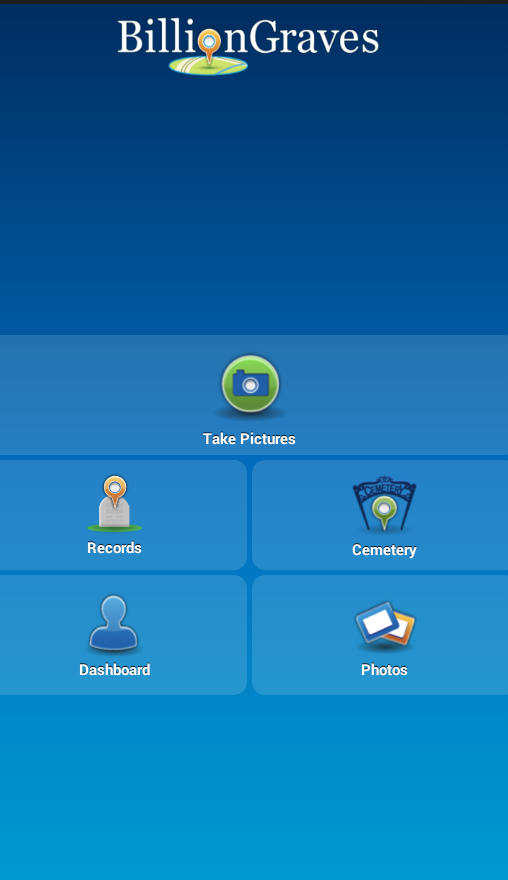
When you visit the cemetery on July 30th, first click the Cemetery icon on the BillionGraves app. You can search for the cemetery by name or just click Show Nearest. When you choose Show Nearest, a list of nearby cemeteries will appear and you can choose the one you are in. You will notice a number indicating how many images have been taken of that particular cemetery. Select the small map icon on the bottom right corner of the screen and it will show you (in real time!) which headstones have already been photographed in that cemetery.
Now, return to the app homepage and click the camera icon and go! Point the camera at each individual headstone and avoid wide shots that include other graves. Just move from marker to marker and click as many as you want. You might want to go a step further and bring a rag or broom with you to clean off any overgrowth on the headstone or marker.
Remember, if images have already been taken in the cemetery, orange markers will reveal the location of those particular graves. Once you have completed taking pictures in the cemetery of your choice, return to the app homepage. Now, click on the Photos icon and upload your images by following the prompts. The BillionGraves app will immediately indicate the location of those grave photos. This will help others coming behind you to not duplicate the work.
With your time and the use of a cell phone, you can help preserve the memory of a soldier and have some very meaningful service hours for high school graduation requirements.
Be sure to shoot a couple selfies and group photos to commemorate your fun day! We would love to see them, so stop by our Genealogy Gems Facebook Page and upload them there.

by Lisa Cooke | Aug 21, 2014 | 01 What's New, Apps, iPad, Kids, Mobile, Smartphones, Technology, Volunteer
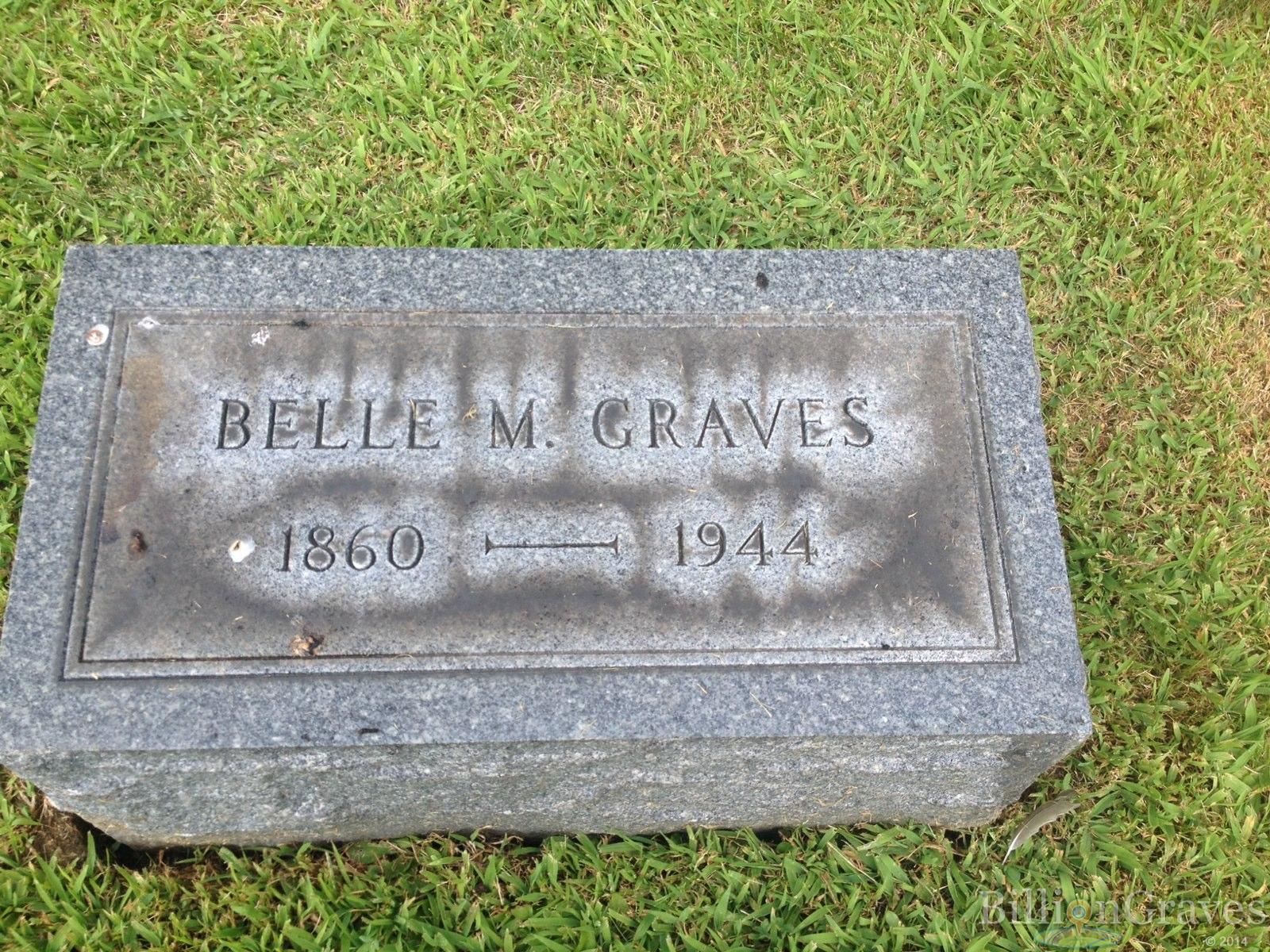
Belle M Graves on BillionGraves!
I’ve been wanting for awhile now to help with BillionGraves’ efforts to photograph the world’s cemeteries. And recently I was looking for a “date” idea with my 9-year old son. Something outdoorsy (for me) and technology-friendly (for him). Well, I realized there’s a perfect app for that combo–BillionGraves!
First we created an account (from the BillionGraves home page). Then, from the Get Started page, we downloaded the app to my iPhone/iPad, watched a quick video about what we were doing (great intro for my son) and then watched another quick video about how to take good gravestone photos.
We were ready to go! But where to go? Which cemeteries near us needed imaging? The BillionGraves app told us!
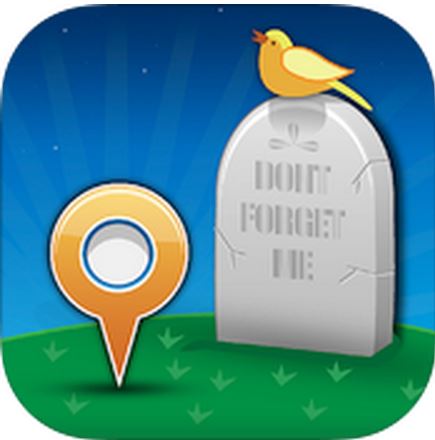 The “Cemeteries” section shows, in order of distance from our house, the names and locations of graveyards near us and how many images have already been taken at each. I was surprised to see that of 15 cemeteries within 6 miles of my house, only 2 had been imaged at all (and only partially, by the small number of images mentioned). There was plenty for us to do!
The “Cemeteries” section shows, in order of distance from our house, the names and locations of graveyards near us and how many images have already been taken at each. I was surprised to see that of 15 cemeteries within 6 miles of my house, only 2 had been imaged at all (and only partially, by the small number of images mentioned). There was plenty for us to do!
Using the link to Google Maps provided within the app on my iPhone, my son navigated us 1.5 miles to a little village cemetery. We took turns taking pictures on my iPhone. (Next time we’ll bring both the iPhone and iPad and split up, now that I know he can take good pictures.) We stayed only about 25 minutes because it was so hot. But we got nearly 60 images taken and committed to return and image the rest.
During those 25 minutes, my son saw the world in a whole new way. We saw a big tombstone for someone whose last name matched that of a main street near our home–was this an early settler? He commented on how sad it was that so many babies and kids were buried there. We sneaked a peek at two letters placed on a child’s grave, written by kids a few days earlier with their own thoughts on life. And–this last gave us a laugh–on the very first row we imaged for BillionGraves, we photographed the headstone of Belle M. Graves!
To me, this was a perfect introduction to family history for kids. I’d advise it for any kid old enough to take a good picture with a mobile device (just supervise them for quality control).
Are you a BillionGraves volunteer, either in the “field” or as an online transcriptionist? Tell us how that’s been meaningful to you on the Genealogy Gems Facebook page!
by | Mar 11, 2014 | 01 What's New, Conferences, Kids
 Do you know (or are you yourself) a young genealogy student between 18-25 who would love to receive an award and attend an AWESOME conference? Then read this press release and share it:
Do you know (or are you yourself) a young genealogy student between 18-25 who would love to receive an award and attend an AWESOME conference? Then read this press release and share it:
“The Southern California Genealogical Society and the Suzanne Winsor Freeman Memorial Student Genealogy Grant Committee are pleased to announce that applications are now being accepted for the 2014 Student Genealogy award. Student genealogists between the ages of 18 and 25 are eligible to apply for the 2014 Grant to be awarded at the 45th Annual Southern California Genealogy Jamboree sponsored by the Southern California Genealogical Society in June 2014.”
The $500 cash award is granted “to a young genealogist attending the Jamboree. In addition, a complimentary three-day conference registration to the 45th Annual Southern California Genealogy Jamboree will be provided by the Jamboree conference.
Any genealogist who is between the ages of 18 and 25 and has attended school in the last 12 months is eligible to apply. The recipient must attend the 2014 SCGS Jamboree in Burbank, California to receive the award. The scholarship recipient will be introduced at the Scholarship Award Breakfast on Sunday, June 8.
Application deadline is 31 March 2014 midnight PST. Application details and forms are available at the Student Grant Webpage.

 nal essay and learning to use the microfilm reader. Emily’s favorite part was learning her great-grandmother married her brother-in-law when her first husband passed away. Each of the kids had several fun stories to share! I particularly liked learning about their great-grandfather (who I remember as a child) working as a grave digger!
nal essay and learning to use the microfilm reader. Emily’s favorite part was learning her great-grandmother married her brother-in-law when her first husband passed away. Each of the kids had several fun stories to share! I particularly liked learning about their great-grandfather (who I remember as a child) working as a grave digger!






 The “Cemeteries” section shows, in order of distance from our house, the names and locations of graveyards near us and how many images have already been taken at each. I was surprised to see that of 15 cemeteries within 6 miles of my house, only 2 had been imaged at all (and only partially, by the small number of images mentioned). There was plenty for us to do!
The “Cemeteries” section shows, in order of distance from our house, the names and locations of graveyards near us and how many images have already been taken at each. I was surprised to see that of 15 cemeteries within 6 miles of my house, only 2 had been imaged at all (and only partially, by the small number of images mentioned). There was plenty for us to do!



